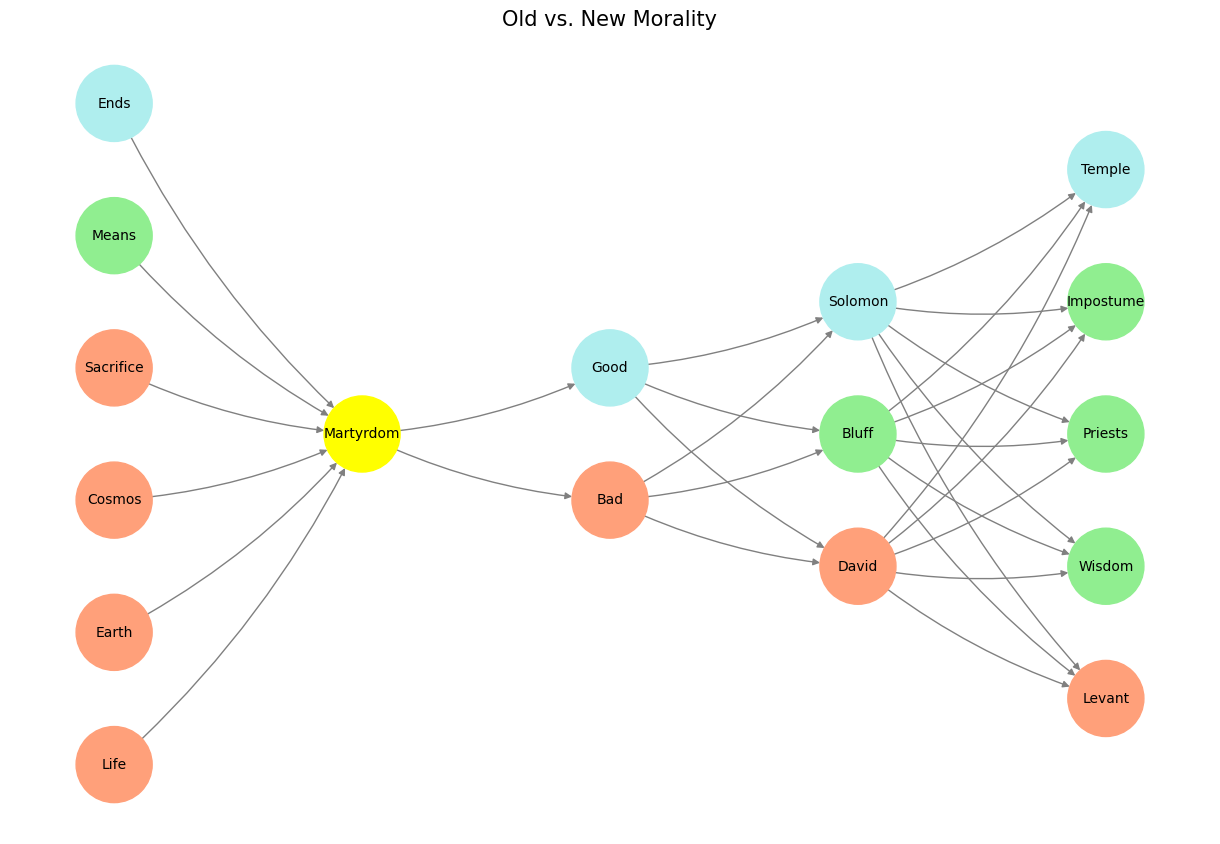Woo’d 🗡️❤️💰#
The Genetic Basis of Difference#
The genetic difference between humans and higher apes is remarkably small—around 95% similarity.
This genetic similarity is evident in shared anatomy, physiology, and even lifespan. Yet, nothing in the animal kingdom parallels the human capacity for creation and abstraction.
The Mechanism of Emergence#
What bridges this gap is intelligence, an emergent phenomenon that arises not from entirely new genes but from subtle genetic variants.
These variants expand the neural architecture of the brain, yielding deeper and broader neural networks.
Combinatorial space, or the capacity for diverse and layered simulations, grows exponentially with the depth and breadth of these networks.
This combinatorial potential enables humanity’s unprecedented ability to simulate, abstract, and conceptualize—activities tightly interwoven with language.
The Role of Language#
Language is intelligence; it encodes abstractions, enabling cooperative, transactional, and adversarial dynamics across generations.
Language not only facilitates communication but also fuels the recursive simulations that define advanced cognition.
The Neurological Key: Autonomic Ganglia#
At the core of this evolution lies the pre-synaptic autonomic ganglia, mediating the interplay between instinctual and deliberative behaviors.
In children, behavior is dominated by instinct. Over time, descending fibers from higher cortical regions begin to modulate these ganglia, tapping into the brain’s broader neural networks.
This modulation transitions humans from instinct-driven actions to deliberate, reflective behaviors—expanding the tapestry of emergent possibilities.
Conclusion#
The difference between humans and animals, while deceptively small at the genetic level, manifests profoundly in the capacity for intelligence. This intelligence, encoded through subtle anatomical and neurological expansions, enables abstraction, simulation, and language—the hallmarks of humanity’s boundless creativity and adaptability.
Show code cell source
import numpy as np
import matplotlib.pyplot as plt
import networkx as nx
# Define the neural network structure; modified to align with "Aprés Moi, Le Déluge" (i.e. Je suis AlexNet)
def define_layers():
return {
'Pre-Input/CudAlexnet': ['Life', 'Earth', 'Cosmos', 'Sacrifice', 'Means', 'Ends'],
'Yellowstone/SensoryAI': ['Martyrdom'],
'Input/AgenticAI': ['Bad', 'Good'],
'Hidden/GenerativeAI': ['David', 'Bluff', 'Solomon'],
'Output/PhysicalAI': ['Levant', 'Wisdom', 'Priests', 'Impostume', 'Temple']
}
# Assign colors to nodes
def assign_colors(node, layer):
if node == 'Martyrdom':
return 'yellow'
if layer == 'Pre-Input/CudAlexnet' and node in [ 'Ends']:
return 'paleturquoise'
if layer == 'Pre-Input/CudAlexnet' and node in [ 'Means']:
return 'lightgreen'
elif layer == 'Input/AgenticAI' and node == 'Good':
return 'paleturquoise'
elif layer == 'Hidden/GenerativeAI':
if node == 'Solomon':
return 'paleturquoise'
elif node == 'Bluff':
return 'lightgreen'
elif node == 'David':
return 'lightsalmon'
elif layer == 'Output/PhysicalAI':
if node == 'Temple':
return 'paleturquoise'
elif node in ['Impostume', 'Priests', 'Wisdom']:
return 'lightgreen'
elif node == 'Levant':
return 'lightsalmon'
return 'lightsalmon' # Default color
# Calculate positions for nodes
def calculate_positions(layer, center_x, offset):
layer_size = len(layer)
start_y = -(layer_size - 1) / 2 # Center the layer vertically
return [(center_x + offset, start_y + i) for i in range(layer_size)]
# Create and visualize the neural network graph
def visualize_nn():
layers = define_layers()
G = nx.DiGraph()
pos = {}
node_colors = []
center_x = 0 # Align nodes horizontally
# Add nodes and assign positions
for i, (layer_name, nodes) in enumerate(layers.items()):
y_positions = calculate_positions(nodes, center_x, offset=-len(layers) + i + 1)
for node, position in zip(nodes, y_positions):
G.add_node(node, layer=layer_name)
pos[node] = position
node_colors.append(assign_colors(node, layer_name))
# Add edges (without weights)
for layer_pair in [
('Pre-Input/CudAlexnet', 'Yellowstone/SensoryAI'), ('Yellowstone/SensoryAI', 'Input/AgenticAI'), ('Input/AgenticAI', 'Hidden/GenerativeAI'), ('Hidden/GenerativeAI', 'Output/PhysicalAI')
]:
source_layer, target_layer = layer_pair
for source in layers[source_layer]:
for target in layers[target_layer]:
G.add_edge(source, target)
# Draw the graph
plt.figure(figsize=(12, 8))
nx.draw(
G, pos, with_labels=True, node_color=node_colors, edge_color='gray',
node_size=3000, font_size=10, connectionstyle="arc3,rad=0.1"
)
plt.title("Old vs. New Morality", fontsize=15)
plt.show()
# Run the visualization
visualize_nn()


Fig. 6 Cambridge University Graduates. They transplanted their notions of the sound means of tradition, the justified tactics of change within stability, and firm and resolute commitment to share ideals of humanity. And setup the stage for an aburd scene in Athens – A Midsummer Nights Dream#

